Romanesco cabbage and its cultivation
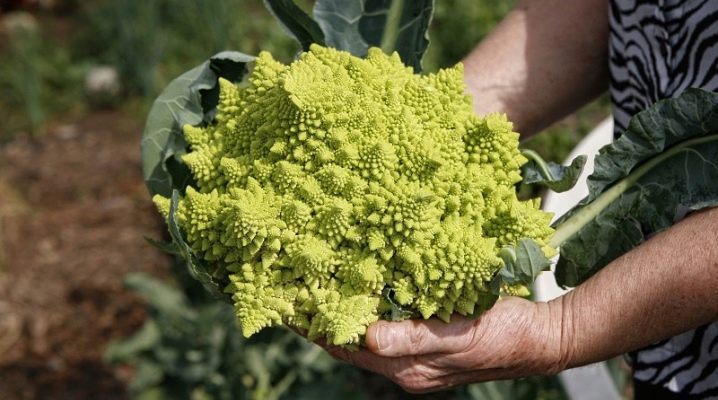
Romanesco (coral cabbage) is considered one of the most interesting and amazing species of the cabbage family. This vegetable has an excellent taste, it is full of useful elements. Today we will talk about how to plant and grow such a crop.
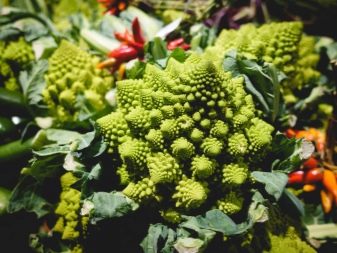
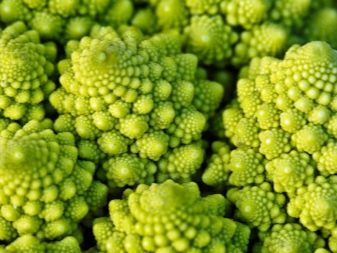
Origin story
Growers say that this vegetable is a cultivar and a type of cauliflower.... Moreover, it cannot be considered either a cauliflower or its hybrid form. There are many opinions about the origin of this culture. Mathematicians who study this fractal cabbage argue that the vegetation was developed at the end of the last century. At the same time, the non-standard shape of the vegetable corresponds to an equation with logarithms, which is why scientists assume that 3D designers worked on the development of the variety using special genes.
But historians absolutely cannot agree with this opinion. Historians are sure that such vegetation was well known to the Etruscans (1st century BC). But still, this variety appeared on sale only in the 90s of the twentieth century. There is also an opinion that this roman cabbage is the result of an Italian selection... Broccoli and cauliflower were crossed.
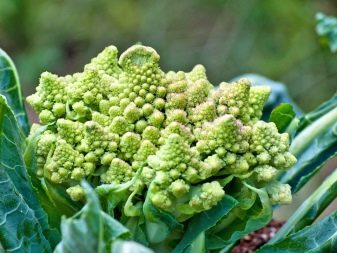

Description
The culture looks very unusual. It is not immediately possible to understand that it is a cabbage. The vegetable is distinguished by its original form, in mathematical science it is called a fractal. This is the name of the figures, consisting of a large number of parts, each of them is similar to the whole single figure. Such vegetation can decorate almost every summer cottage. Romanesco is a healthy vegetable with good flavor characteristics.
This cabbage is an annual plant that is classified as a cruciferous plant. The cabbage head is a complex bloom that is collected from repeating inflorescences in the form of a pyramid. Only the head itself can be eaten. The head of a plant consists of a large number of individual small pyramids, which are composed of other smaller pyramids. All inflorescences are placed very tightly together, they grow in a spiral, as a result, an interesting figure is formed in the form of an original Christmas tree.

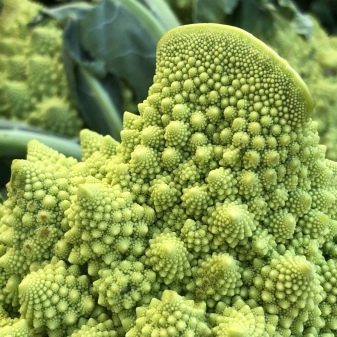
Benefit and harm
This fractal beautiful cabbage has a large number of useful properties.
- Improves vision. The vegetable contains a large amount of vitamin A, which prevents the degeneration of the macula (the area in the retina with the greatest visual acuity).
- Normalizes blood circulation. Romanesco also contains iron, which promotes the production of red blood cells, their main purpose is to maintain the supply of organs and organ systems with oxygen.
- Destruction of infection. The vegetable contains beneficial antioxidants that act as "defenders" against disease-causing organisms.
- A positive effect on the functioning of the digestive system. Cabbage contains special dietary fibers that remove toxins from the digestive system.
- Heart protection. Vitamins K, B, Omega-3 acids, which are found in vegetables, supply the heart with all the necessary nutrients.
- Free radical protection... This is achieved through fiber, special antioxidants.
- A positive effect on the functioning of the brain... The beneficial components found in Romanesco improve blood circulation, the brain receives more oxygen, so its cells become more active.
- Protection against cancer. The vegetable contains the beneficial ascorbic acid and is considered very effective in treating cancer.
But remember that in some cases, the use of such a culture can seriously harm.
- Diarrhea... In such cases, cabbage should be introduced into the diet with extreme caution.
- Flatulence. In this case, the use of a raw vegetable will be contraindicated.
- Diseases associated with the thyroid gland, exacerbated heart disease. The use of this cabbage can only exacerbate the condition of diseased organs.


Varieties
Now we will look at what varieties of Romanesco are.
- "Emerald Goblet". This Russian variety is early. It has an average yield. The "Emerald Goblet" has a light green domed head. It has a medium density. Its weight is up to 500 grams. The taste of this species is excellent. This type of cabbage is recommended for fresh consumption and can also be used for freezing. "Emerald Cup" is suitable for planting and growing in the middle lane, including the Moscow region.

- "Pearl"... This mid-late Russian species has a medium-dense head. Its weight is up to 800 grams. The head is green, its shape is round-flat. The taste of the culture is also excellent. The variety is considered to be resistant to infections.
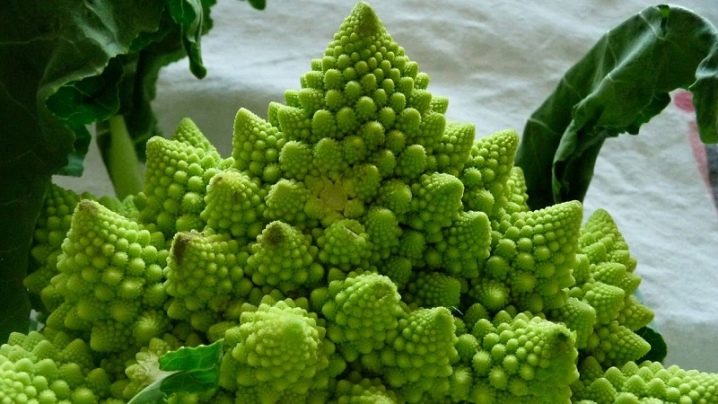
- "Amphora" F1. This hybrid is early maturing. Its heads are green-yellow in color, they are aligned, their weight reaches 400 grams. The taste of the vegetable is quite delicate, the yield of the species is average.
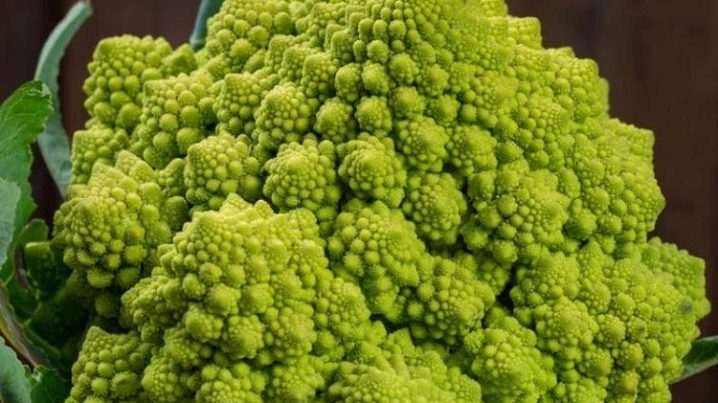
- "Veronica" F1. This hybrid is a powerful strong species with high yields. The variety is considered medium early. The pyramidal heads can weigh up to 2 kg. Veronica F1 has a good nutty flavor. The vegetation is resistant to flowers and various infections.

- Puntoverde F1. The Dutch hybrid is medium early. It grows with dense, bright green heads, which can weigh up to 1.5 kg. The variety boasts a high resistance to fungal infections. The inflorescences are slightly rounded, so they are practically not damaged during assembly and transportation. The variety has a fairly high yield.

Landing
You can plant Romanesco with both seedlings and seed material.
Seedlings
In this case, you need to prepare the substrate for seedlings. It is best purchased ready-made from a garden store. You can cook it yourself. In the latter case, it is necessary to mix peat, turf soil and clean sand in one container. To disinfect the prepared composition, it is necessary to water it 7 days before the start of sowing with potassium permanganate. For planting, it is best to use plastic glasses with a volume of at least 250 ml. Peat pots are also available. A drainage layer is laid out at the bottom of the containers, its thickness should be approximately 1-1.5 cm.
Earthen mass is poured upward. Seed material is also spread there, it will need to be slightly deepened. In addition to preparing the seedlings themselves, it is also necessary to prepare the soil. To do this, in the fall, it is carefully dug up, while mineral components are introduced there, as well as manure or compost. Wood ash is also recommended. Seedlings are planted on the site 50-60 days after sowing. The minimum air temperature by this time should reach 12-13 degrees Celsius.
If in the future you plan to use simple manual watering, then it is better to plant the vegetation in separate holes. If the irrigation is drip, then the planting is performed in rows. Depressions are formed in the ground. The distance between them should be about 50 cm. The distance between the individual rows should be about 55-60 cm.The earth is watered with heated water, then it is poured with potassium permanganate. After that, young seedlings are carefully placed in the holes made. At the same time, their root systems are carefully straightened. Next, the soil is slightly compacted with your hands.
After disembarkation, it is recommended that the land be watered well again with settled water. And also it should be mulched.

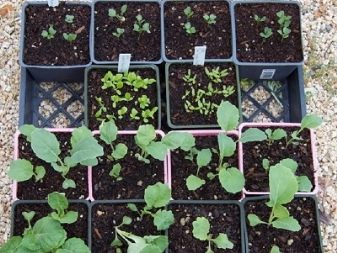
Seeds
The seed material of Romanesco is very small, so it is rather difficult to sow it directly into the soil. Before sowing, the land is also leveled and watered well with warm liquid. Seed material is evenly sown to a depth of no more than 2 cm. Then all this is sprinkled with earth.
Growing care
In the future, the culture will need proper care. Otherwise, it will not be able to fully develop and give a good harvest.
- Watering... Romanesco, planted outdoors, needs abundant moisture. The soil must not be allowed to dry out. But excessive humidity will also negatively affect vegetation. The best option for such a culture would be drip irrigation. After planting on the site, the plant should be watered only twice every 7 days. At the beginning of the growing season, 1 sq. m landings account for 1 bucket of water. As the cabbage grows, the rates begin to gradually increase. When watering, you can take both cold and warm liquid. Vegetation should be moistened only at the root. After the procedure, the soil is loosened well and weeded.
- Top dressing... The first time fertilization should be applied 15 days after planting. In this case, the best option would be a solution made on the basis of bird droppings or mullein. These organic components are poured with water in a ratio of 1: 10. In this state, the tincture should ferment for 3-4 days. After that, the composition is again diluted 10 times with water. One plant should have 0.5 liters of such a nutritious organic solution. After another couple of weeks, mineral components are added to the same composition (nitrophoska, feeding with boron or molybdenum). With a lack of molybdenum, the cabbage heads will become very coarse, they will acquire an unnatural color. If there is a lack of boron, the vegetation will grow poorly and often hurt.
Remember that Romanesco does not tolerate shading; it should only grow in open and well-lit areas. But at the same time, its heads in bright light gradually darken and slowly develop, therefore, when the first heads are formed, they will need to be periodically shaded. The easiest way is to break the leaf blades from above. Such a procedure will not harm plants at all. Do not forget to loosen the soil around the vegetation.... This procedure is recommended after rain or watering. Loosening is done together with weeding. At the same time, hilling with the introduction of wood ash will be useful.
If you follow the basic rules of care, you can grow a full-fledged crop that will give a good harvest.

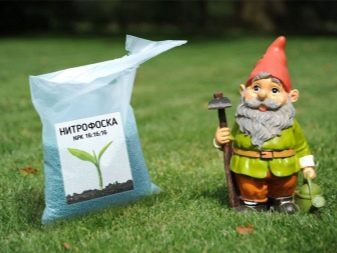
Diseases and pests
Romanesco suffers from the same infections as plain cabbage. Most often, it is affected by the following diseases.
- Mosaic... This dangerous viral infection leads to the fact that yellow streaks begin to appear on the leaf blades, they are arranged in a chaotic manner. To avoid mosaic infestation, you should periodically treat the vegetation with Bordeaux liquid. If the cabbage is still sick, then it will have to be removed and burned immediately so that it does not become a source of infection and does not infect other plants on the site.
- Blackleg. This infection usually occurs at the stage of growing seedlings. When infected, the bases of the stems begin to blacken. Then they turn brown. To prevent cabbage from getting sick with a black leg, it is necessary to strictly observe watering norms, to process the culture and the ground around it with sulfur preparations in a timely manner.
- Mucous bacteriosis... This disease is also called wet bacterial rot.If affected, watery patches will begin to appear on the flowers and leaf blades. They quickly grow in size and then gradually begin to rot. As a preventive measure, it is worth disinfecting the seed material and containers before planting. If the culture was nevertheless infected, then it is necessary to immediately remove the diseased plant from the garden, then it must be burned.
Such cabbage can be affected by a variety of harmful insects.
- Cabbage aphid... With the appearance of this parasite, the vegetation will greatly slow down in growth and development. Further, the leaves will begin to take on an unnatural pink color. They will gradually curl up and simply die. If you see cabbage aphids on plants, then it is better to immediately use insecticidal preparations. The most effective are the following compositions: "Karate", "Karbofos", "Iskra".
- Cruciferous fleas. When such a pest appears, small sores form on the upper part of the leaves. To destroy the flea, the vegetation is treated with soapy water. And you can also make a solution with wood ash.
If there are many such parasites on the cabbage, then you should use the preparations "Aktara" or "Karbofos".

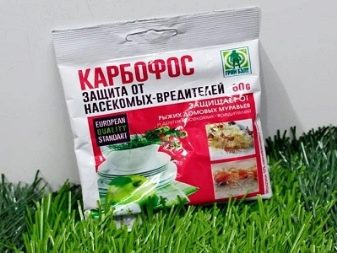
Harvesting and storage
The collection begins when large inflorescences are formed on the plants. It is not worth delaying the harvesting process, because the overripe cabbage heads will begin to crumble and simply deteriorate. Their pulp will become very coarse, the amount of useful elements in it will be drastically reduced. The exact ripening period will directly depend on the characteristics of a particular variety, on the sowing time. As a rule, it occurs at the end of the summer season and in the beginning of autumn. Ripe heads are cut out with a sharpened knife, while the stems that adjoin them are taken away, since they will also be edible. The best time to harvest is in the morning, while the sun is not baking yet. Remember that the vegetable will taste best on the day you cut it.
Such cabbage is stored for a very short time, even in the refrigerator. It should be used within 1-2 weeks of cutting.
If possible, it is better to blanch it, and then carefully cut into separate parts and freeze. After freezing, Romanesco will not lose its beneficial properties and taste, it will remain fresh and quite suitable for various processing.
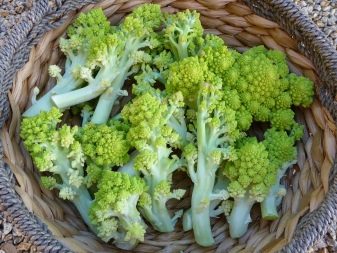














The comment was sent successfully.